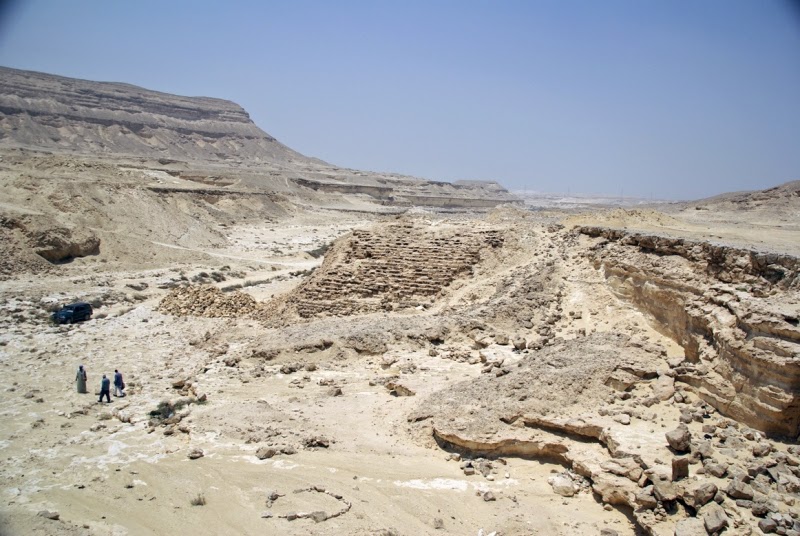The oldest large-scale dam in the world...
About forty kilometres south of Cairo, close to the town of Helwan, lie the ruins of the
Sadd-el-Kafara ( = “dam of the Pagans”), an embankment dam of great size built
around 2700-2600 BC, discovered over 100 years ago in the old, deep and dry
Garawi ravine. The masonry-faced earthen dam originally measured 14 m height
and 113 m length along the crest and is considered today the oldest dam of such
size known in the world.
 |
| Sadd-el-Kafara |
The primal
aim of the dam was to retain the water from rare but violent floods. It could
also ensure water to workers and animals working in exploration of stone and
marble in the nearby quarries, for the construction of the pyramids and the
temples. Never completed, the dam had been under construction for 10-12 years
before being destroyed by a flood. It was only rediscovered by Georg
Schweinfurth in 1885.
Its great
size indicates the dam engineers were not doing experimental work, but they
built it in a very systematic way. Its construction took place in the era when
the Egyptian kings built their pyramids on the other bank of River Nile. There
exist similarities between the stonewalls of the pyramids and the dam. And
still there are many questions that revolve around Garawi valley Dam.
The
dam stands on a bar of solid rock. It must have been an impressive structure
before the whole of the central part, covering a width of about 36 metes, was
washed away. In his History of Dams, Norman Smith estimated the
reservoir to have had a capacity of nearly 600,000 cubic meters of water. No
mortar was used, as it was not considered to be a sealing material in ancient
times.
Strangely,
despite its importance, and the fact that it remains intact today, the dam is
ignored by tourist agencies. Even visitors interested in archaeology of Egypt
do not usually include it in their plan of visits. Moreover, although the dam
has been discovered already since the late 19th century, it has not been
adequately studied yet.
This case
study presents the Sadd-el-Kafara dam with the aim to better inform people of
its existence and sensitize towards its protection and rehabilitation to fit as
a touristic site.

